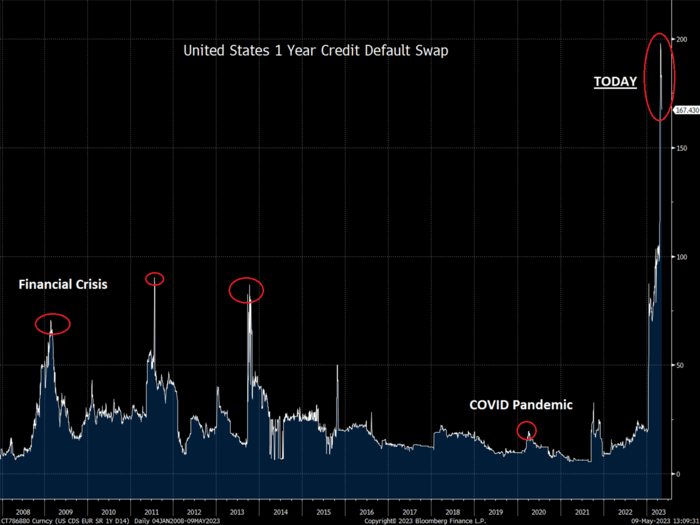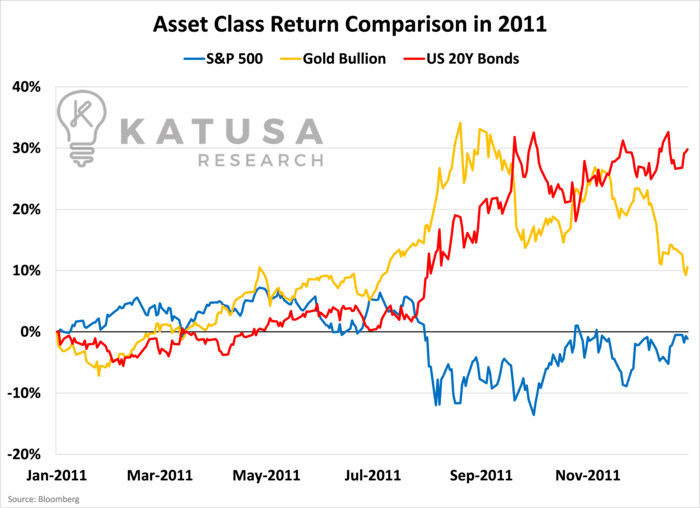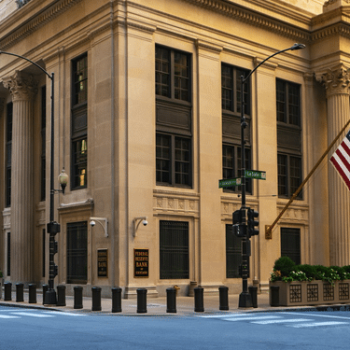
This catastrophic scenario may seem like a plot from a Hollywood blockbuster, but it’s not entirely fiction…In 2001, Argentina faced a devastating debt crisis that shook the global economy to its core, leading to the largest sovereign default in history.Bank accounts were frozen, the Argentine peso collapsed, and violent protests erupted in the streets as millions were plunged into poverty overnight.As the U.S. grapples with its recurring debt ceiling crises, it’s essential for investors to understand the gravity of the situation and the potential consequences of inaction.While the U.S. has yet to face a disaster on the scale of Argentina’s meltdown…The ever-looming threat of default or credit rating downgrades sends shivers down the spines of market participants worldwide.
The Central Question Is – Has Debt Become Irrelevant?
Should the debt ceiling be raised or not?In the absence of an agreement, the U.S. government could potentially run out of funds by the end of the month.This would lead to immediate credit downgrades and missed payments by the U.S. government.Can you picture the chaos? Will this happen? Highly unlikely.In reality, the ongoing debate about the debt ceiling is mere posturing.We all know it will eventually increase.After all, there are two things politicians love:
- Spending money they don’t possess (debt) and
- Using taxpayers’ money (your money).
Most politicians in Washington lack the expertise of Wall Street’s Fixed Income departments when it comes to managing debt finance, but that’s not the main issue.The debt ceiling in the U.S. and globally will persistently inch higher and this poses risks to citizens around the world. Because let’s face it, in the end, we the taxpayer end up taking the brunt of the loss.US debt has become more expensive as interest rates have increased.Debt that is maturing either needs to be paid back with available cash, or it needs to be refinanced. Most of the time, debt is refinanced and at new higher interest rates, these obligations become harder to meet. This in turn affects bankruptcy risks.We are seeing this in real-time here in the US debt markets.
Remember Credit Default Swaps?
A key market to watch for insight on ceiling risks is what happens in credit default swaps for the US government.
You can think of a credit default swap as a form of insurance in case a bond is not paid back.
- Riskier fixed-income investments will have higher premiums in the CDS market because there is a higher chance of going under.
As you can see in the chart, spikes in the swap market typically occur during times of crisis, though this recent move is orders of magnitude greater than previous highs.

A key reason for the move here is based on the government’s ability to pay its debts.A government bank account fluctuates depending on tax receipts, fiscal expenditures, and debt repayments. The chart below shows the historical and current level of cash in the US treasury.

How the debt ceiling crisis affects financial markets
When the U.S. faces a debt ceiling crisis, it can create problems not only for its own economy but also for financial markets around the world.Since the United States has the world’s largest economy, any issues it faces can cause concern for investors everywhere.In the past, debt ceiling crises have made financial markets uncertain and unpredictable.
- Worried about the possible negative effects of a U.S. default or a lower credit rating, investors might move their money to safer investments.
This shift can lead to increased interest in assets like gold or U.S. Treasury bonds, which are often seen as more stable.The crisis can also have a big impact on bond yields and interest rates. If investors are nervous, they may ask for higher yields on U.S. Treasuries.This can make it more expensive for the U.S. government to borrow money and could result in higher interest rates for regular people and businesses.Higher rates can hurt certain parts of the economy, like housing and consumer credit.While there were no specific debt ceiling increases in 2020, the Bipartisan Budget Act of 2019 (passed on August 2, 2019) had suspended the debt ceiling until August 1, 2021. This suspension covered the entire year of 2020.For 2021, the debt ceiling suspension expired on August 1, and the U.S. Treasury began implementing extraordinary measures to avoid defaulting on its obligations.On October 14, 2021, Congress passed a short-term suspension of the debt ceiling, which raised the limit by $480 billion, allowing the U.S. government to continue borrowing until December 3, 2021.
Market Shock and Operation Twist in 2011
In 2011, a near disaster happened when the “Tea Party” Republicans and President Barack Obama’s administration clashed over the debt ceiling.The S&P 500 kept its gains for the year until late July when the problem got worse. After avoiding a crisis, stock prices started to drop.The situation got even worse when Standard & Poor’s lowered the U.S. government’s credit rating from AAA to AA+ because they didn’t like the deal that stopped a default.Stock prices began to go up again after the Federal Reserve used a plan called “Operation Twist” about two months later.This plan meant that they used money from bonds that were ending to buy new long-term bonds.And was supposed to make the difference between short-term and long-term interest rates smaller.Even though the S&P 500 finished the year almost the same as it started and had big gains compared to gold after the Federal Reserve helped, it was still behind long bonds at the end of the year.

One thing is for sure, there is no free lunch with debt and likely wild times are ahead of us in the markets.If the markets fall apart, I’ve got my short list of world-class opportunities that subscribers and I are waiting to pounce on.If you are looking to gain an edge in your research, consider learning more about Katusa’s Resource Opportunities.Regards,Marin
Details and Disclosures
Investing can have large potential rewards, but it can also have large potential risks. You must be aware of the risks and be willing to accept them in order to invest in financial instruments, including stocks, options, and futures. Katusa Research makes every best effort in adhering to publishing exemptions and securities laws. By reading this, you agree to all of the following: You understand this to be an expression of opinions and NOT professional advice. You are solely responsible for the use of any content and hold Katusa Research, and all partners, members, and affiliates harmless in any event or claim. If you purchase anything through a link in this email, you should assume that we have an affiliate relationship with the company providing the product or service that you purchase, and that we will be paid in some way. We recommend that you do your own independent research before purchasing anything.






